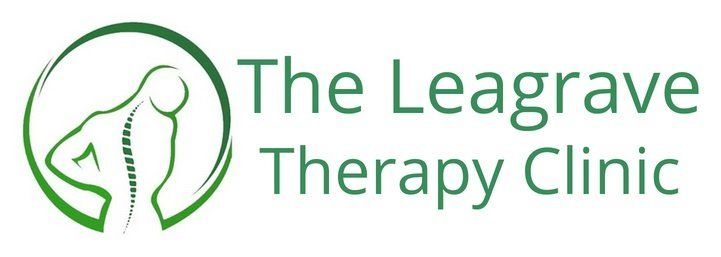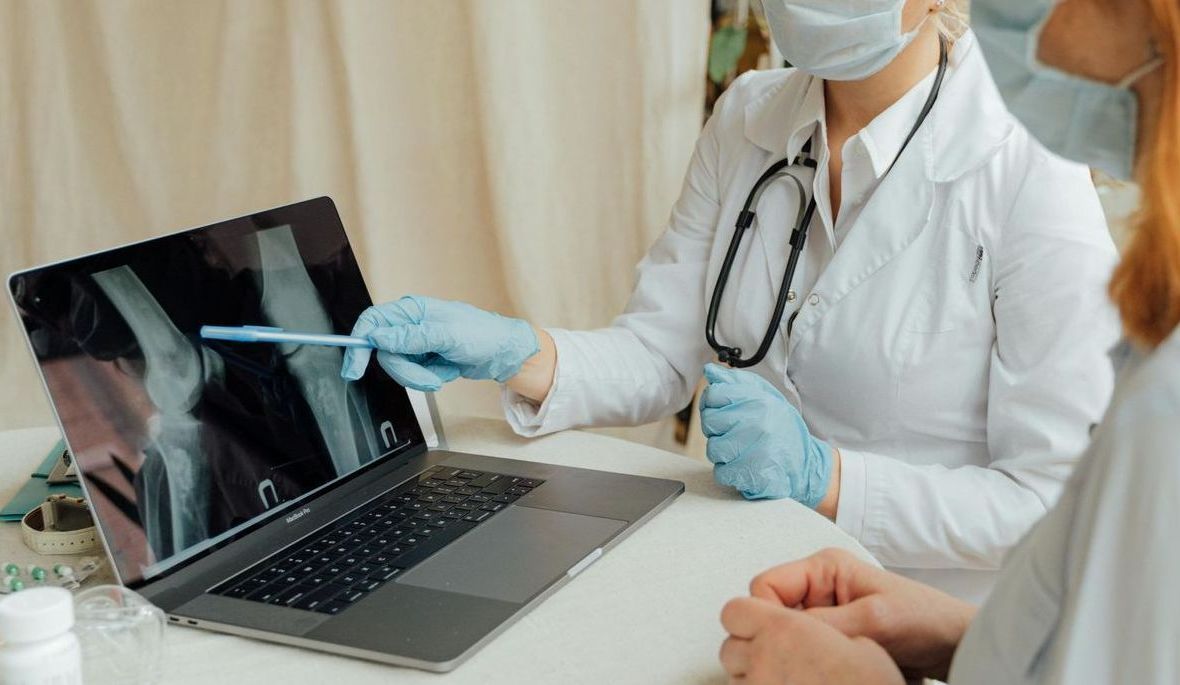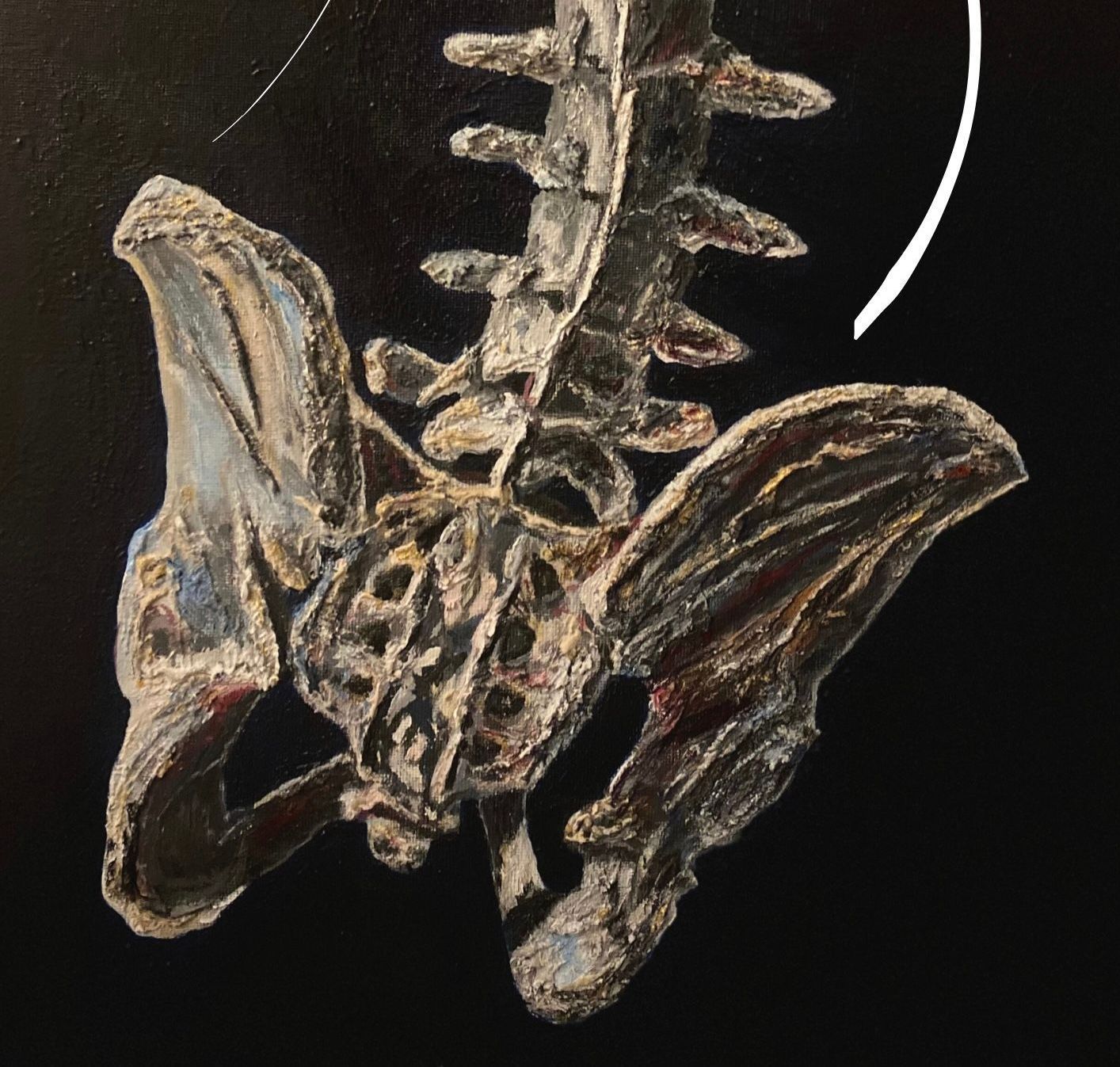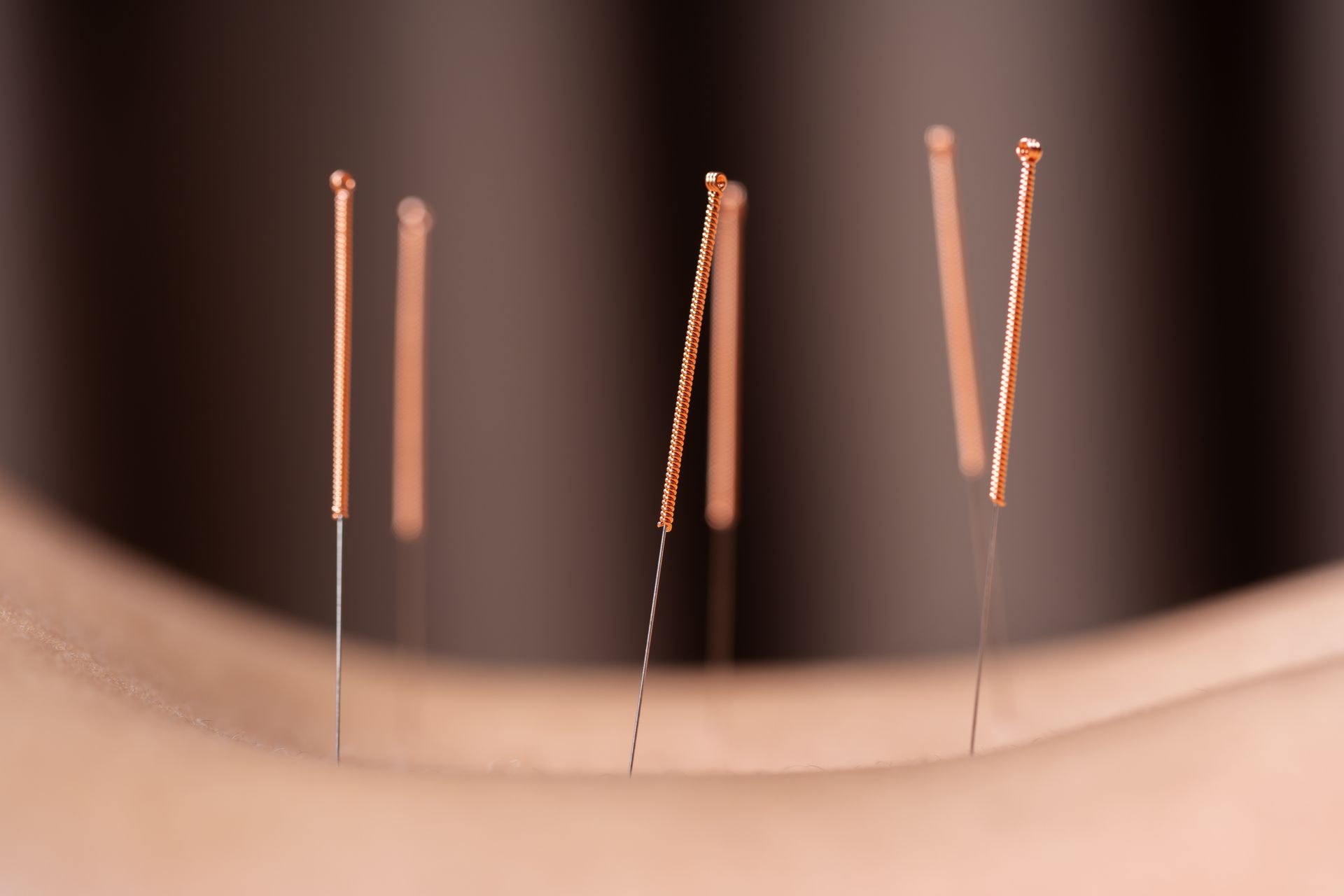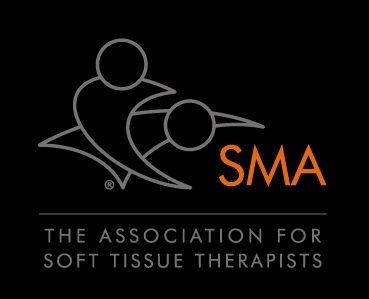The Femoral Nerve Entrapment And Anterior Thigh Pain
- by Joanna Blair
- •
- 11 Jul, 2023
- •
Course, Anatomy, Supply
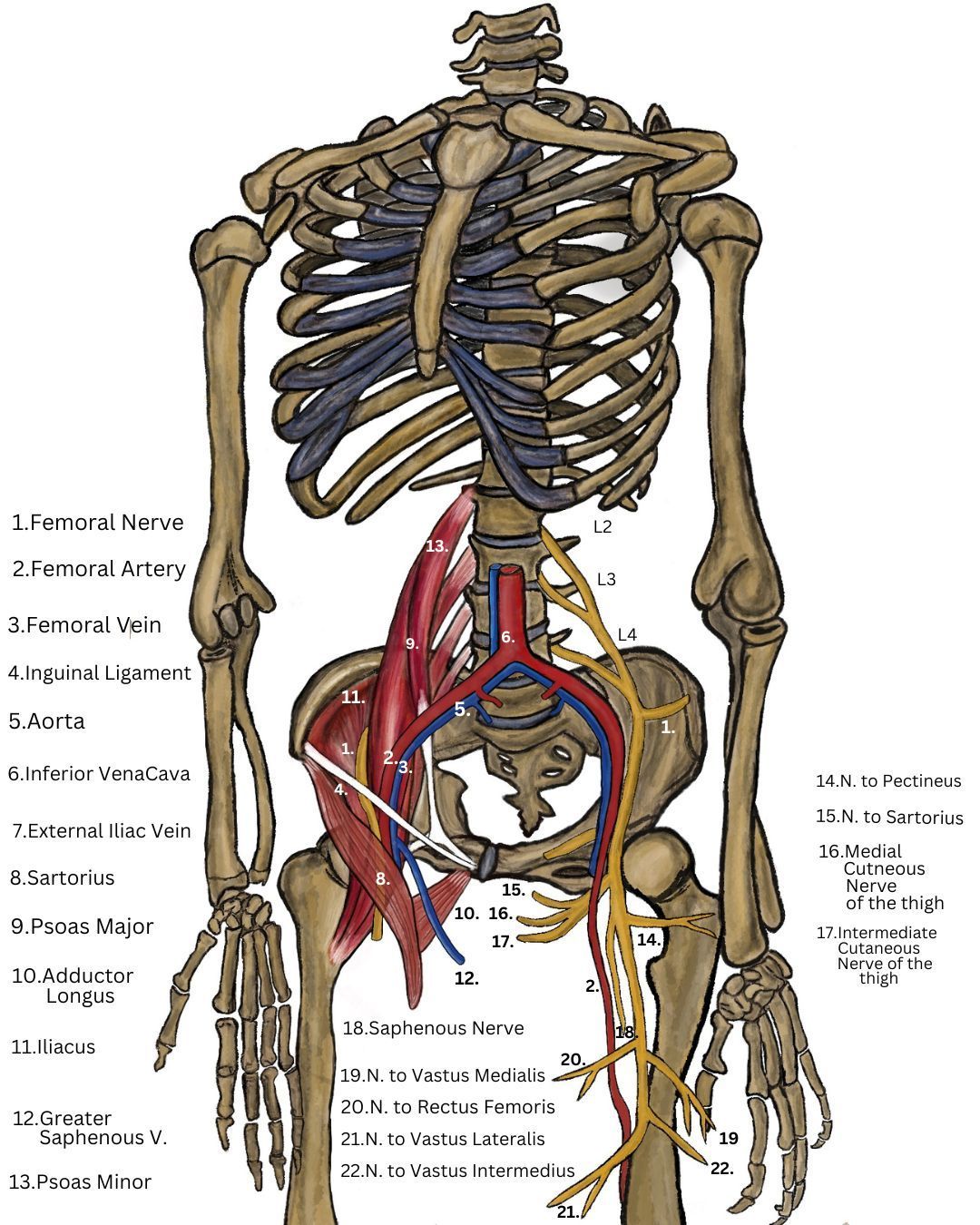
The femoral nerve originates from the lower back and runs down the front of the thigh into the lower leg. The nerve helps the muscles bend the hip and straighten the leg. It innervates the muscles and skin of the hip and thigh and is the longest branch of the lumbar plexus (4).
The Neve's course specifically rises from the ventral rami of the 2nd, 3rd and 4th lumbar nerves and emerges from the lower lateral border of the psoas major muscle, travels through the iliopsoas muscle under the iliac fascia, passes deep to the inguinal ligament and enters the femoral triangle (discussed below) (4).
The iliac fascia along with the iliopsoas thickens to form the iliopectineal band that separates the femoral vessels from the nerve. The femoral nerve then divides into the superficial and deep terminal branches in the femoral triangle.
The Superficial Branch
The superficial branches include the lateral musculocutaneous nerve which innervates the sartorius muscle and the skin of the anterior thigh. It also contains the medial musculocutaneous nerve which divides to innervate the pectineus muscle, the articular surface of the acetabulum and skin of the medial thigh (4).
The Deep Branch
Comprises of the saphenous nerve which is sensory only, supplies the skin of the medial leg to as far as the medial malleolus (inner ankle). It is the largest terminal cutaneous branch of the femoral nerve and the longest nerve in the body (4).
The Neve's course specifically rises from the ventral rami of the 2nd, 3rd and 4th lumbar nerves and emerges from the lower lateral border of the psoas major muscle, travels through the iliopsoas muscle under the iliac fascia, passes deep to the inguinal ligament and enters the femoral triangle (discussed below) (4).
The iliac fascia along with the iliopsoas thickens to form the iliopectineal band that separates the femoral vessels from the nerve. The femoral nerve then divides into the superficial and deep terminal branches in the femoral triangle.
The Superficial Branch
The superficial branches include the lateral musculocutaneous nerve which innervates the sartorius muscle and the skin of the anterior thigh. It also contains the medial musculocutaneous nerve which divides to innervate the pectineus muscle, the articular surface of the acetabulum and skin of the medial thigh (4).
The Deep Branch
Comprises of the saphenous nerve which is sensory only, supplies the skin of the medial leg to as far as the medial malleolus (inner ankle). It is the largest terminal cutaneous branch of the femoral nerve and the longest nerve in the body (4).
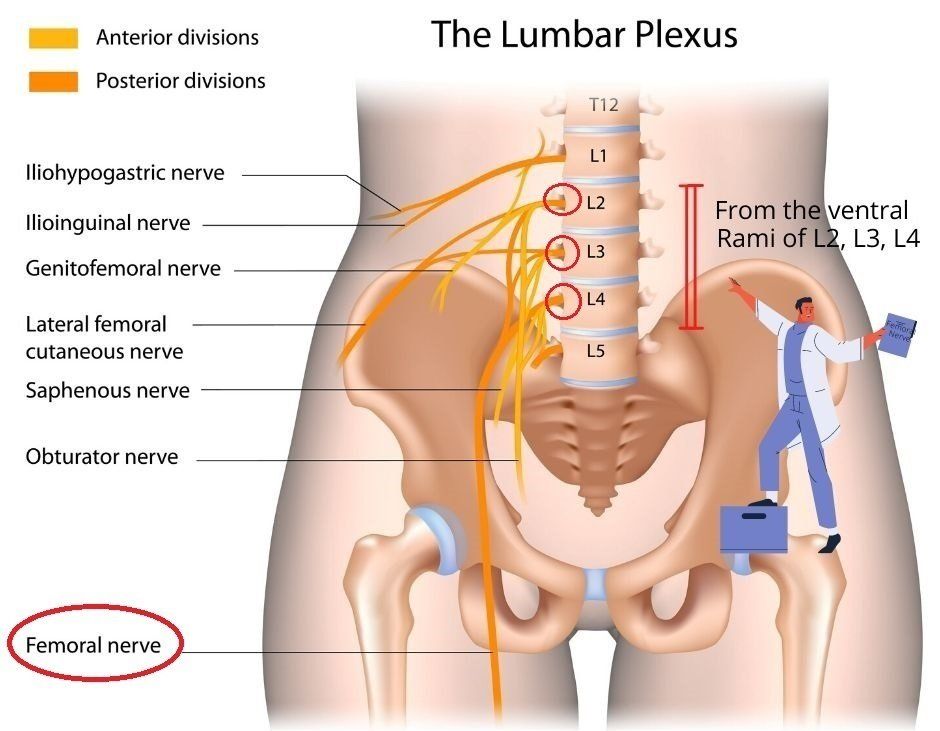
Femoral Nerve Entrapment
Nerve entrapment may occur around the musculotendinous, osseous and ligamentous structures as a result of potential increased strain and compression of the peripheral nerve at these sites.
In rare cases, femoral neuropathy may also arise as a result of traumatic iliacus haemotoma which is more common amongst young athletes. In these cases, patients often complain of groin pain and neurological findings such as myotome (muscle) weakness.
Entrapment of the femoral nerve can lead to various symptoms and functional impairments and result to several underlying causes that may include:
In rare cases, femoral neuropathy may also arise as a result of traumatic iliacus haemotoma which is more common amongst young athletes. In these cases, patients often complain of groin pain and neurological findings such as myotome (muscle) weakness.
Entrapment of the femoral nerve can lead to various symptoms and functional impairments and result to several underlying causes that may include:
- Compression: often due to structural issues or anatomical abnormalities e.g. muscles and hernias.
- Trauma: or injury to the femoral nerve or surrounding structures such as fractures, dislocations, surgical procedures.
- Inflammatory conditions; such as diabetic neuropathy, vasculitis or infections which cause swelling and inflammation and compression of the femoral nerve.
- Misplaced catheter into the femoral artery within the groin.
- Frequent use of tight seatbelts, clothing or waist belts combined with excess body weight.
- Underlying tumour or growth.
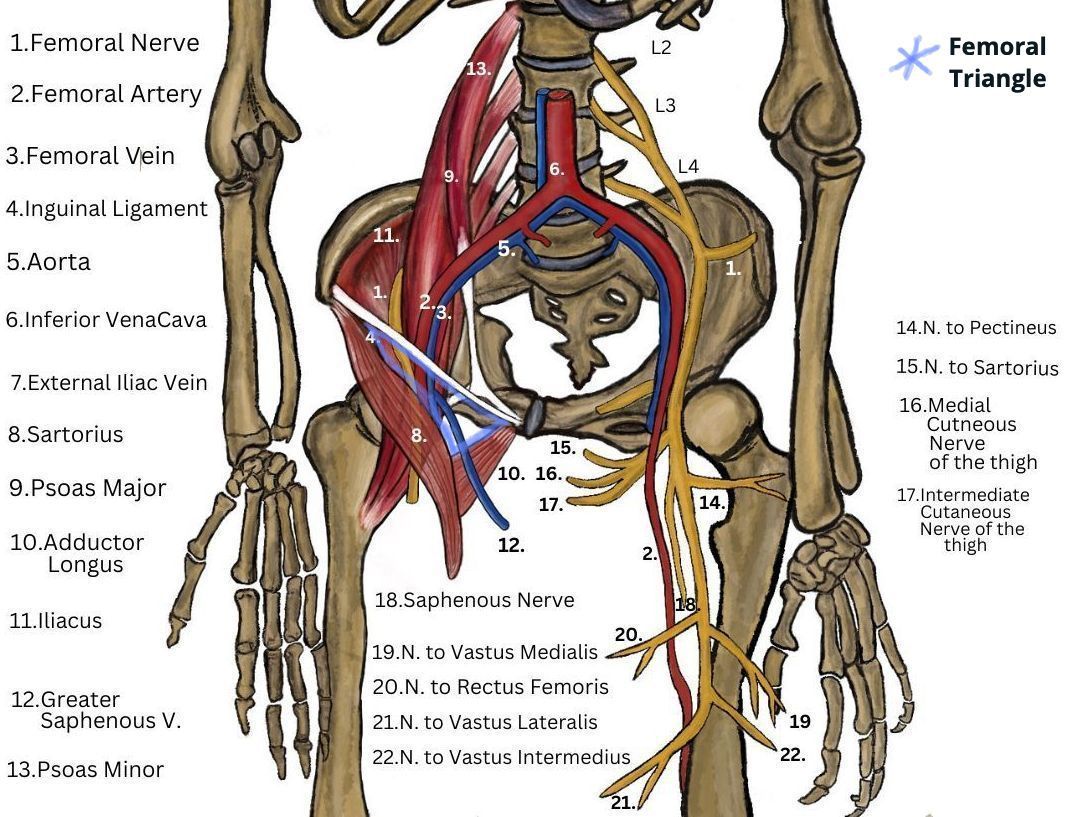
Femoral Nerve and the Innervation of Structures
The main muscles innervated by the femoral nerve are:
- Sartorius
- Quadriceps femoris (rectus femoris, vastus lateralis, intermedius and medialis)
- Ilopsoas
- Pectineus
- Anterior wall of the hip (acetofemoral) joint.
- The anterior aspect of the femur
- Anteromedial walls of the knee joint
Femoral Triangle
Within the medial aspect of the proximal thigh is the femoral triangle and where the femoral pulse can be palpated, specifically at the mid-inguinal point.
Shahab (2023) uses the acronym NAVEL for the structures within the femoral triangle where the femoral nerve lies laterally out of all the contents within the femoral triangle (4).
The anatomical orientation of contents within the femoral triangle that lay from LATERAL to MEDIAL are:
N - Femoral Nerve
A - Femoral Artery
V - Femoral Vein
E - Femoral Canal (Empty Space)
L - Lymphatics
Shahab (2023) uses the acronym NAVEL for the structures within the femoral triangle where the femoral nerve lies laterally out of all the contents within the femoral triangle (4).
The anatomical orientation of contents within the femoral triangle that lay from LATERAL to MEDIAL are:
N - Femoral Nerve
A - Femoral Artery
V - Femoral Vein
E - Femoral Canal (Empty Space)
L - Lymphatics
Meralgia Paresthetica (MP)
Meralgia paraesthetica (MP) is thigh pain that refers to mononeuropathy of the lateral femoral cutaneous nerve commonly caused by the entrapment or compression of this nerve(1). Patients often complain of burning, numbness, paraesthesia or reduced sensation over the anterolateral thigh which can often limit daily activities and sleep (1).
MP has also been linked to obesity and diabetes myelitis (DM), pregnancy, the wearing of tight clothing; trousers or belts or leaning against hard objects(1). It has been reported to be from vitamin B12 deficiency (folate deficiency anaemia).
MP has also been linked to obesity and diabetes myelitis (DM), pregnancy, the wearing of tight clothing; trousers or belts or leaning against hard objects(1). It has been reported to be from vitamin B12 deficiency (folate deficiency anaemia).
Physical Therapy Treatment
In most cases, related symptoms subside on their own.
However, manual therapy i.e. deep tissue massage and physical therapies can help by aiming to reduce muscular tensions, improve joint mobility, any postural defects and lifestyle habits that might be maintaining the condition.
However, manual therapy i.e. deep tissue massage and physical therapies can help by aiming to reduce muscular tensions, improve joint mobility, any postural defects and lifestyle habits that might be maintaining the condition.
Stretching of the Iliopsoas:
References
1. Grossman, M. G., Ducey S. A., Nadler, S. S., Levy, A. S. (2001) Meralgia paresthetica: diagnosis and treatment.
J Am
Acad Orthop Surg. ;9: 336-344.
2. Martin, R., Martin, H. D., Kivlan, B. R. (2017) Clinical Commentary: Nerve Entrapment in the Hip Region: Current Concepts Review, IJSPT, 12; 7: 1163-1173.
3. Murray,I. R., Perks, F.J., Beggs, I., Moran, M. (2010) Femoral Nerve Palsy Secondary to Traumatic Iliacus Haematoma; A Young Athlete’s Injury, BMJ Case: 1-5.
4. Shahab, S. (2023) Femoral Nerve [online] www.kenhub.com (last visited 16/07/2023).
5. Szucs, S., Morau, D., Iohom, G. (2010) Femoral Nerve Blockade, Medical Ultrasonography, 12; 2: 139-144.
2. Martin, R., Martin, H. D., Kivlan, B. R. (2017) Clinical Commentary: Nerve Entrapment in the Hip Region: Current Concepts Review, IJSPT, 12; 7: 1163-1173.
3. Murray,I. R., Perks, F.J., Beggs, I., Moran, M. (2010) Femoral Nerve Palsy Secondary to Traumatic Iliacus Haematoma; A Young Athlete’s Injury, BMJ Case: 1-5.
4. Shahab, S. (2023) Femoral Nerve [online] www.kenhub.com (last visited 16/07/2023).
5. Szucs, S., Morau, D., Iohom, G. (2010) Femoral Nerve Blockade, Medical Ultrasonography, 12; 2: 139-144.
